Painting, sculpture, performance, video. These are Adrian Paci’s favorite media. Never as in his case, however, is technique at the service of the idea, and the choice for one or the other is always a function of the message to be conveyed. Trained as a painter at theTirana Academy of Art in the late 1980s, Paci had the difficult experience of living under Albania’s communist regime. Its web of control extended to art as well, forcing artists to pursue a realism in line with party propaganda, a style deliberately oblivious to the lessons of the historical avant-gardes, as well as to any innovation that had meanwhile appeared on the European scene. In 1992 Paci arrived in Italy to continue his studies with the course in art and liturgy at the Beato Angelico Institute in Milan. In 1997 he moved there permanently. It is a radical turning point not only for his career, but for his own artistic practice. The discovery of new means of expression, especially video, induces Paci to reread and renew even the traditional techniques learned in Albania. The novelty of this encounter, which is first and foremost cultural, intersects with an urgent personal communicative urge. The same one that precisely in 1997 prompted the artist to grab a video camera to film his daughter intent on telling fairy tales to her dolls, in a disruptive mix of fiction and lived history. This would give rise to Albanian Stories (1997) and A Real Game (1999), recordings that still have all the flavor of a family film but that well illustrate the reworking mechanisms that we individually enact in response to externally imposed experiences and situations, in that case the political and civil upheavals that swept Albania in the 1990s.
In this sense, it can be said that Paci’s strong theme will be individual memory of History, that is, the major events experienced by individuals, and their becoming collective memory. One thinks, for example, of Centro di permanenza temporanea (2007), which turns the spotlight, in a manner at once anti-heroic and monumental, on the migratory phenomena that characterize our time and that, in a direct or indirect way, involve us. Recording and listening to all these events then becomes for the artist a true creative gesture, in the composition of a mosaic of existential paths that, transferred into art by the individual, take on all the charge of universal facts capable of uniting men at different latitudes. Also included in this discourse are the themes of globalization, loss, and mobility. A repertoire, as we can see, absolutely in keeping with the times. It is no coincidence that Paci’s works have toured some of the most important museum institutions (from MoMA PS1 in New York to Jeu de Paume in Paris to MAXXI in Rome) and have been exhibited in major international events (the 1999 and 2005 Venice Art Biennale, the 2006 Sydney Biennale, the 2008 Rome Quadrennial, the 2014 Venice Architecture Biennale).
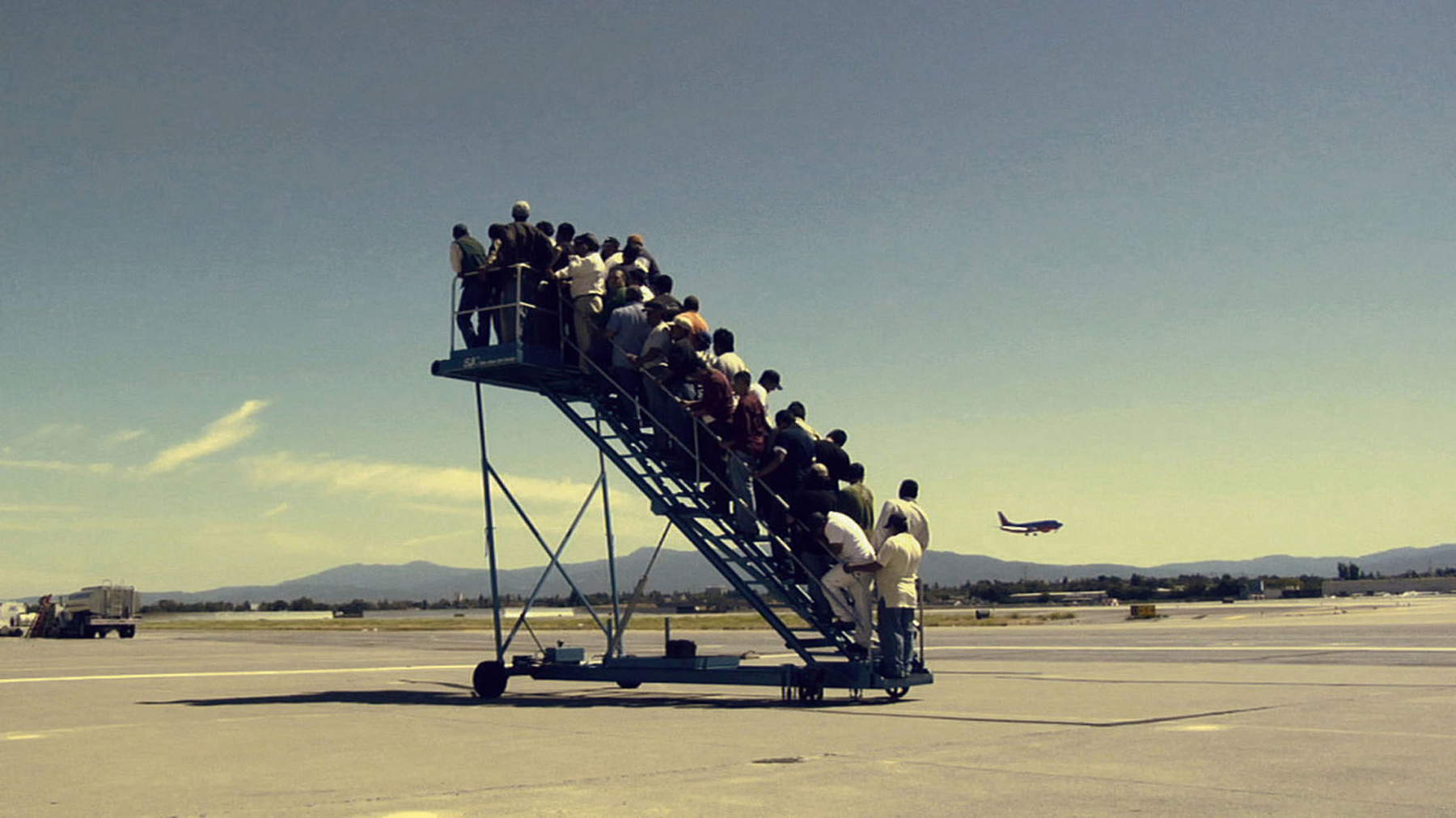 |
| Adrian Paci, Temporary Residence Center (2007; single channel video, color, sound, duration 5’30) |
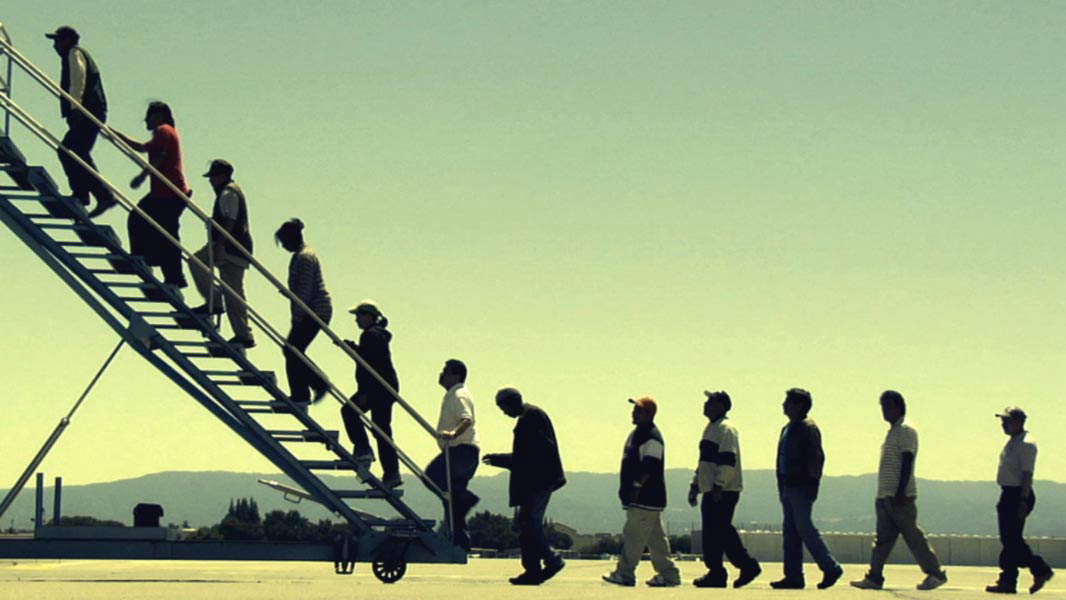 |
| Adrian Paci, Temporary Residence Center (2007; single channel video, color, sound, duration 5’30) |
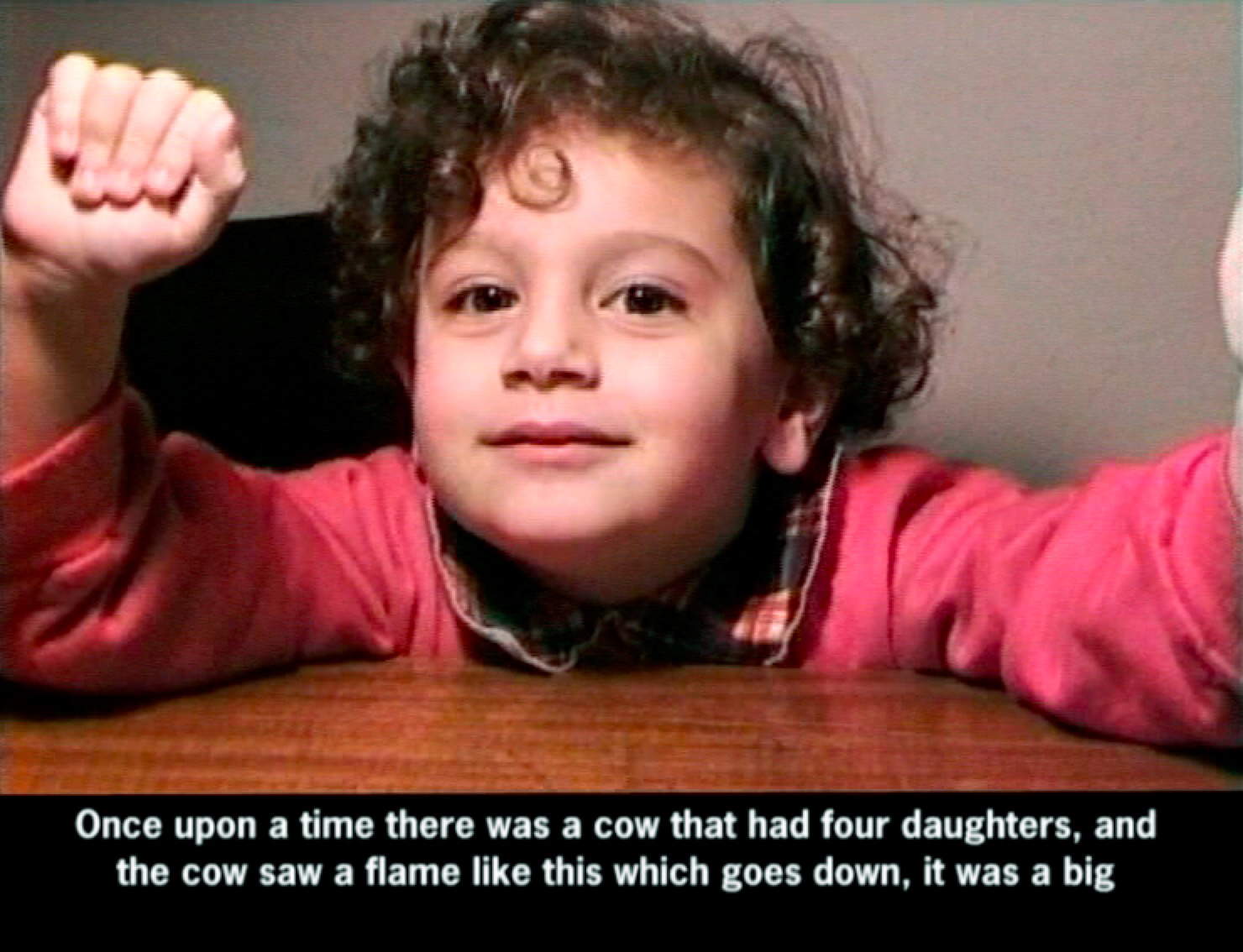 |
| Adrian Paci, Albanian Stories (1997; single-channel video, projection or monitor, color, sound, duration 7’08) |
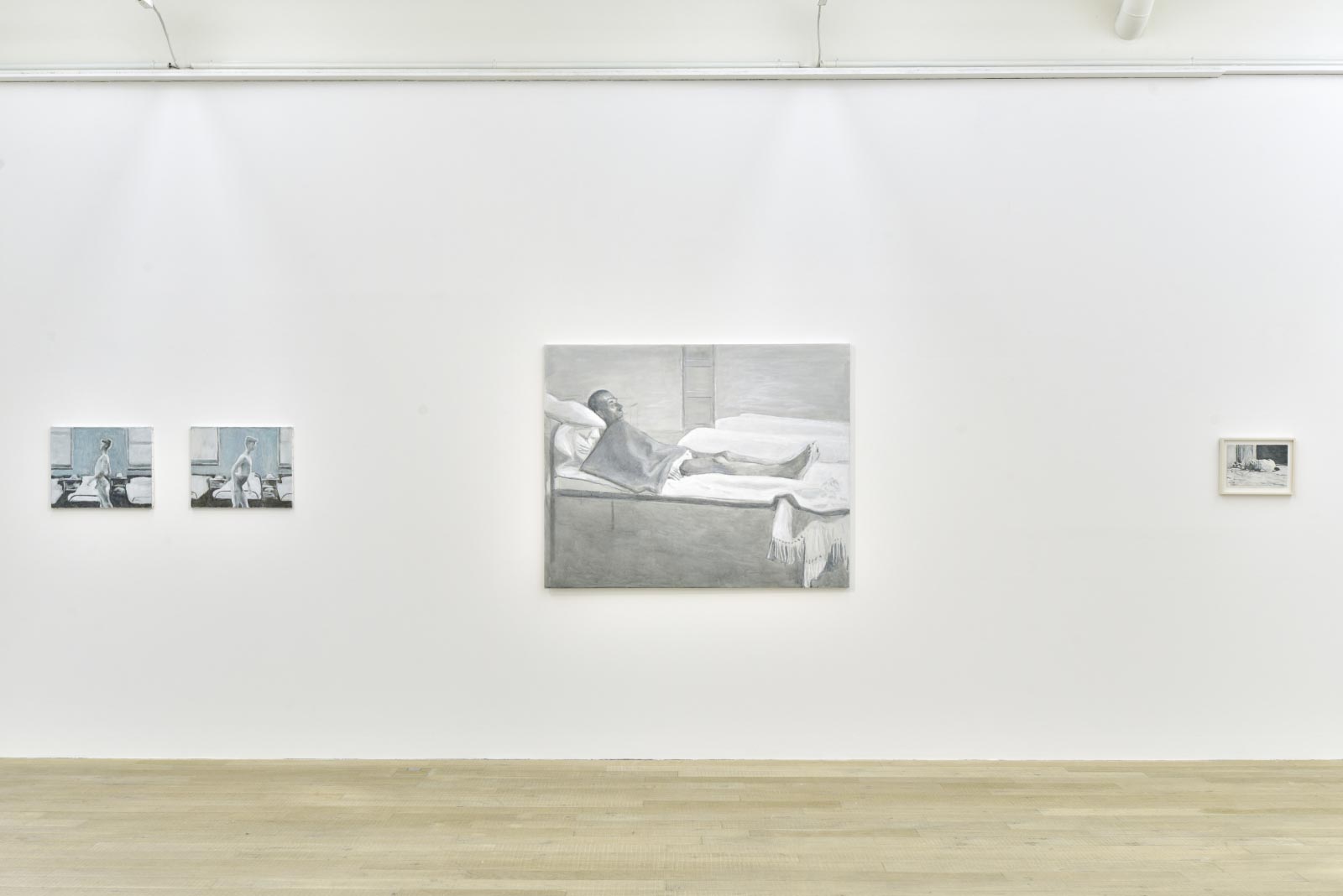 |
| Installation for the exhibition Prova held in 2020 at the Peter Kilchmann Gallery in Zurich |
One of the artist’s last solo exhibitions, Prova, was held at the Peter Kilchmann Gallery in Zurich in 2020. The title of the exhibition is the same as that of a recent video work in which, against the backdrop of a suspended, nocturnal atmosphere, architecture, bodies, spaces, faces, and voices merge. Trial (2019) features five men who approach microphones to pronounce and repeat the word “trial.” Perhaps a reference to the sphere of theater and performance, confirmed by the majestic concrete stage backdrop of the video. The filmed gesture also seems to constitute a kind of verification and timid affirmation of existence on the part of those men, already the protagonists, moreover, of Turn On (2004). The scene also reproposes many characteristic elements of Paci’s art, which for years has consistently developed around the recurring motifs mentioned above and a clearly recognizable aesthetic universe.
Always present, declined in the different media employed by the artist, is the human figure, caressed and investigated as if the lived experience were imprinted on the skin and inferable from a shrewd analysis. This attention is made clear by the artist himself, who recalls the anatomical interest as a founding element of socialist realism and thus of his training as a painter. Another characteristic aspect of Paci’s work is the spatial component, the monumentality and plastic aspect that permeates both the settings and the characters, who are often dropped into large open and depersonalized environments that are functional to the narrative.
From the earliest video experiments, while with the passage of time the use of the medium is refined reaching the level of the most complex film productions (without this representing, however, a highly significant aspect for the artist, who is never in search of stylistic complacency as an end in itself in his works), what Paci narrates is the universal human condition, made up of countless individual stories. One work in which this propensity emerges sharply is Rasha (2017). The tragic story of a Syrian refugee, Rasha, is here rendered by the face, movements, looks, and expressions of the woman, framed by Paci while only her voice runs in the background.
 |
| Adrian Paci, Rasha (2017; single-channel video, color, sound, duration 20’56) |
 |
| Adrian Paci, His Own Hands (2015, installation at MAXXI in Rome) |
In Sue proprio mani (2015) Paci instead puts the written word at the center: in the work co-produced with director Roland Sejko, hundreds of letters that never reached their destination are recovered. Writing them during World War II, between 1944 and 1945, were Italian citizens who had become involved in Albania in the upheavals that would lead to the establishment of Enver Hoxha’s regime. As in Trial, an imposing, unadorned and abandoned architecture accommodates a few characters in a nocturnal atmosphere. In the staging, which features five different screens, their voices as readers rise, cross over, become intense, envelop and overpower the viewer and then return to a softer rhythm. Through the artistic gesture, the stories guarded but also imprisoned for more than half a century by paper are released, as in a ritual, and finally find recipients and their own new dimension, from intimate and private to universal and shared.
Moreover, the sphere of ritual is also dear to Paci. It can be found in some works such as Vajtojca (2002), in which, having reached a professional prey, the artist puts on his best clothes and lies down on a bed ready to have the woman perform the rite of passage from life to death, and then get up again and embark on a new existence. Or in The guardians (2015), which again calls into question the theme of death. Here the protagonist is a multitude of children playing in a cemetery, taking care of the graves, busying themselves cleaning up the massive stone headstones. In a single gesture, poignant yet playfully experienced, we can glimpse the flow of history that, from one generation to the next, proceeds through the use of ritual forms.
The boundary between life and death, exorcised and tenderly lapped in these two video works, is tinged with political reflections in Interregnum (2017). The work, exhibited in 2020 at the Pecci Center in Prato in a dialogue with the exhibition The missing planet, dedicated to artistic research in the former Soviet republics, opens a window on the state funerals of a number of communist dictators from different eras. Paci, who retrieves material from archives and Albanian television broadcasts, captures in these passing moments a true “choreography of grief,” as he calls it, juxtaposing individual faces and expressions with the compactness of bodies imposed by the ceremonial on the collective.
 |
| Adrian Paci, Vajtojca (2002; single-channel video, color, sound, duration 8’51) |
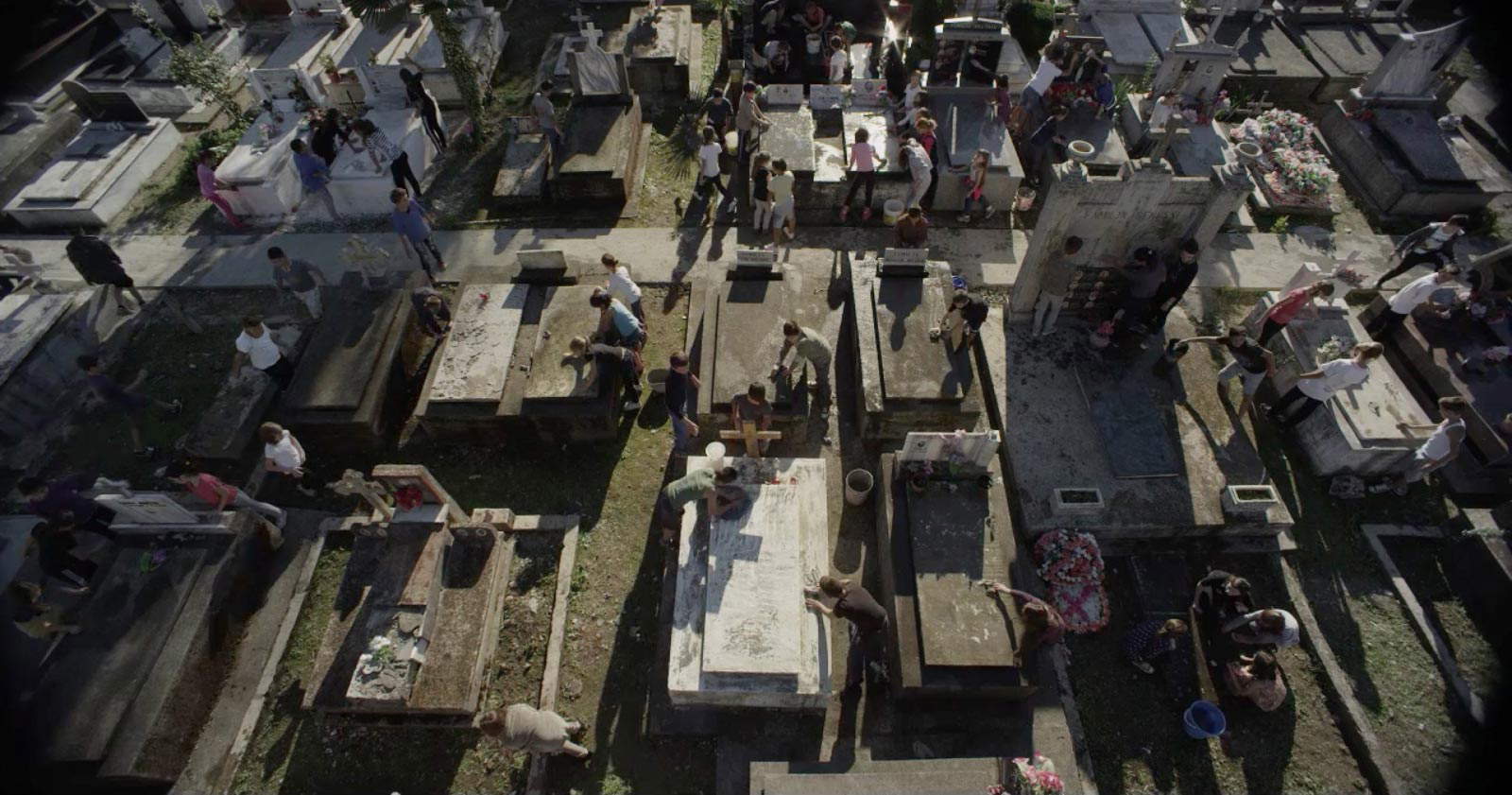 |
| Adrian Paci, The Guardians (2015; hd video projection in blue ray, color, sound, duration 6’22) |
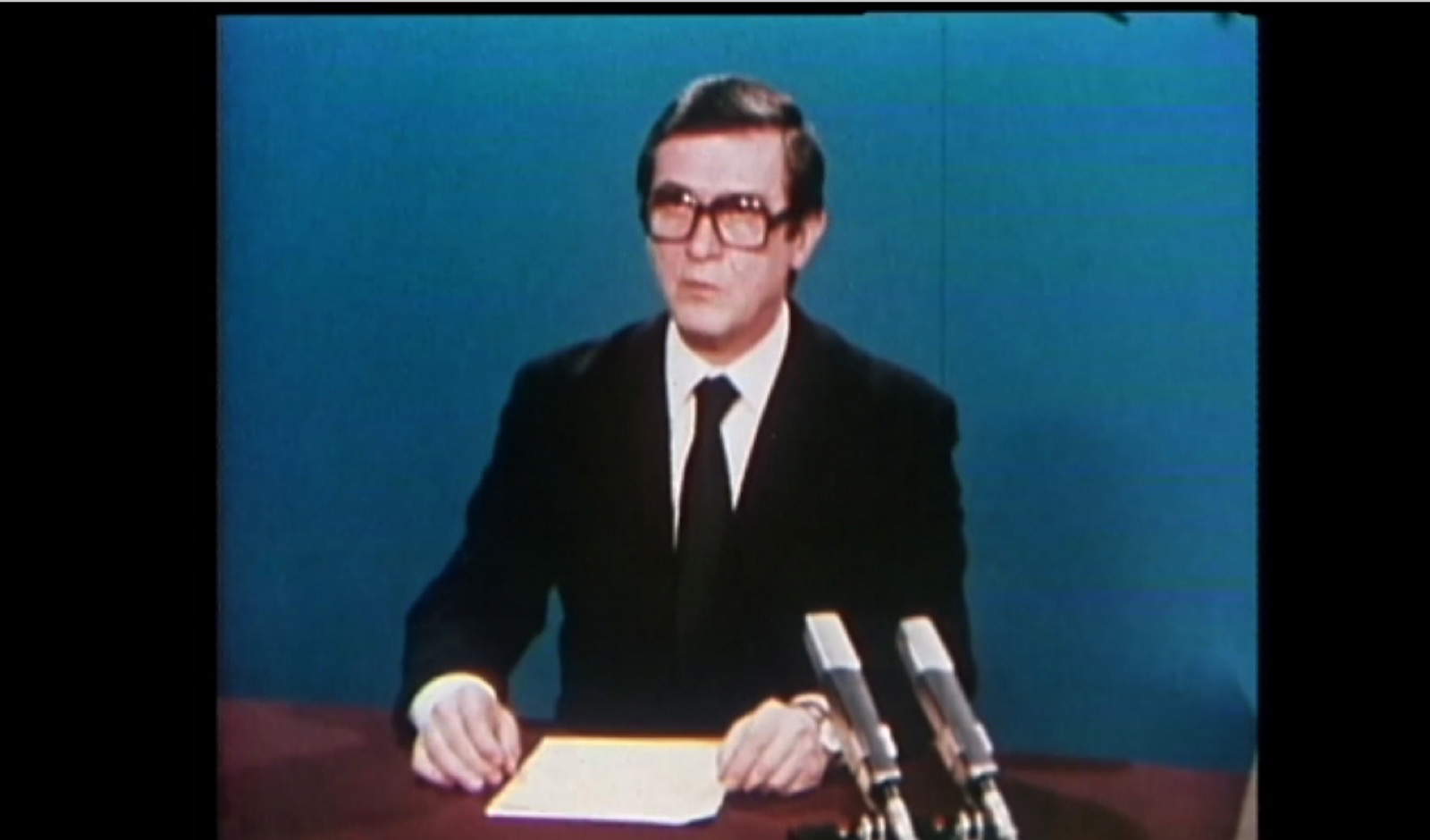 |
| Adrian Paci, Interregnum (2017; single channel video, color, sound, duration 17’28) |
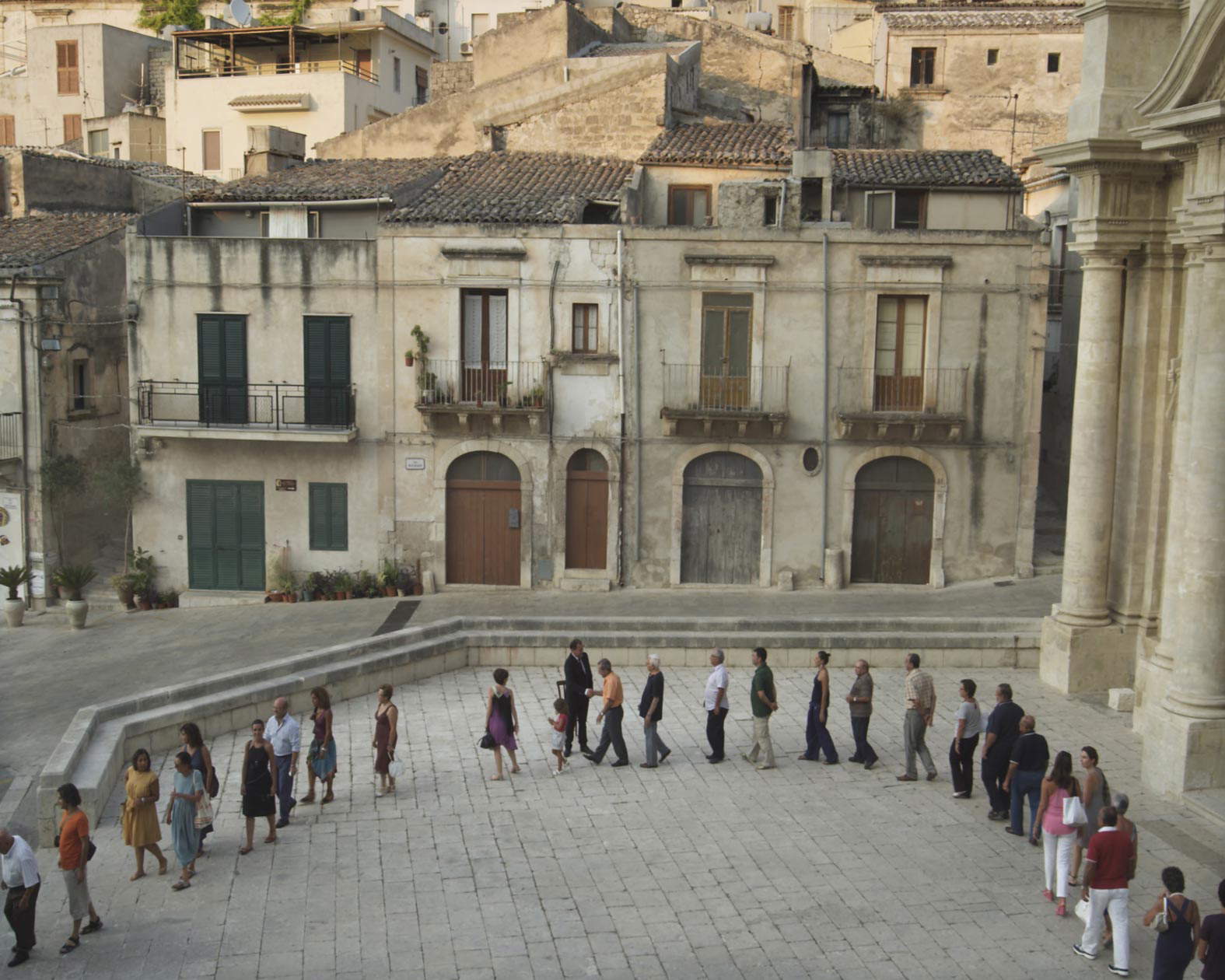 |
| Adrian Paci, The Encounter (2011; hd video projection in Blue Ray, color, sound, duration 22’) |
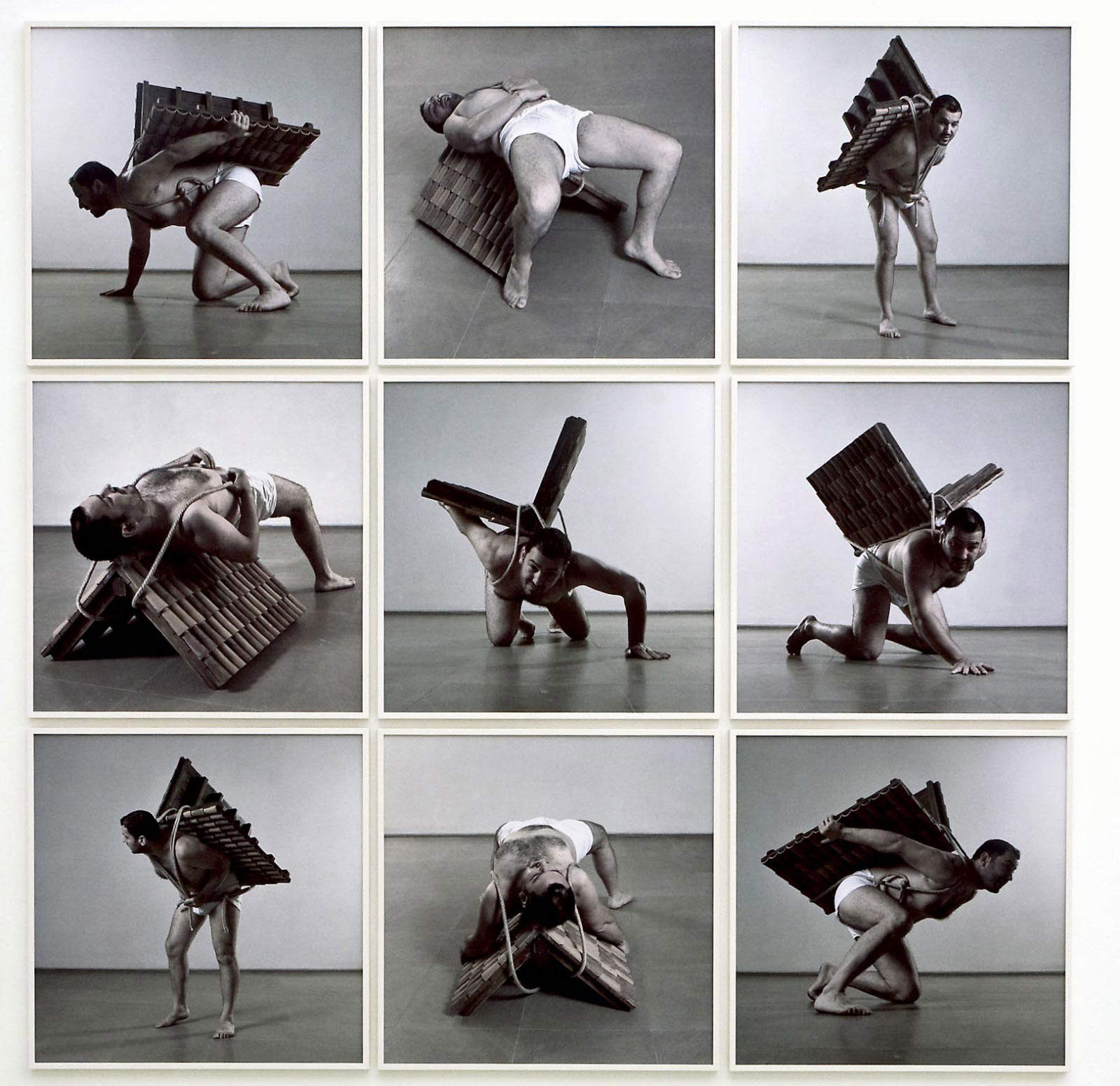 |
| Adrian Paci, Home to go (2001; 9 color photographs, 103 x 103 cm each) |
Theidea of community is also present, in a completely different context, in the performance The Encounter (2011). Scenographically shot from above in the urban space of Scicli, Sicily, the action features the artist as an officiant in the churchyard of the local Baroque church, celebrating the daily gesture of the handshake, greeting hundreds of people who neatly make their way to the encounter with the artist in this secular ceremony.
But perhaps the most iconic work in Paci’s oeuvre is Home to go (2001). This is a cast of the artist’s body, stopped in the action of carrying, secured behind his back by ropes, an overturned brick roof. Paci stages a condition, the characteristic one of man and the globalized world, with a house that becomes at once portable and heavy, giving voice to a multitude of experiences of contemporaneity.And this is perhaps the value of Paci’s work that, through the protagonists of his works, puts art at the service of our Lives in Transit, to borrow the title of one of his exhibitions (PAC Padiglione d’Arte Contemporanea, Milan, 2013). In this sense, not only does his art engage with the most debated issues of our time (identity, migration, the relationship between reality and fiction, the intertwining of History and stories) but it also provides clear answers about the role of contemporary art: questioning our present, finding some answers and leaving many others open, in the hands of the observer.
Warning: the translation into English of the original Italian article was created using automatic tools. We undertake to review all articles, but we do not guarantee the total absence of inaccuracies in the translation due to the program. You can find the original by clicking on the ITA button. If you find any mistake,please contact us.